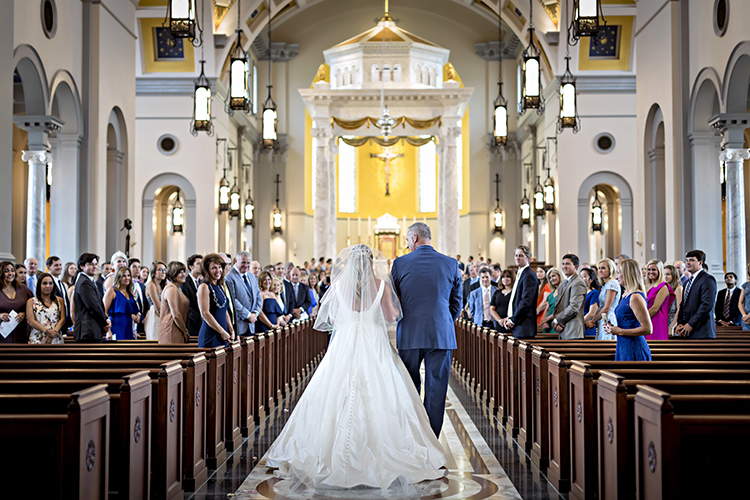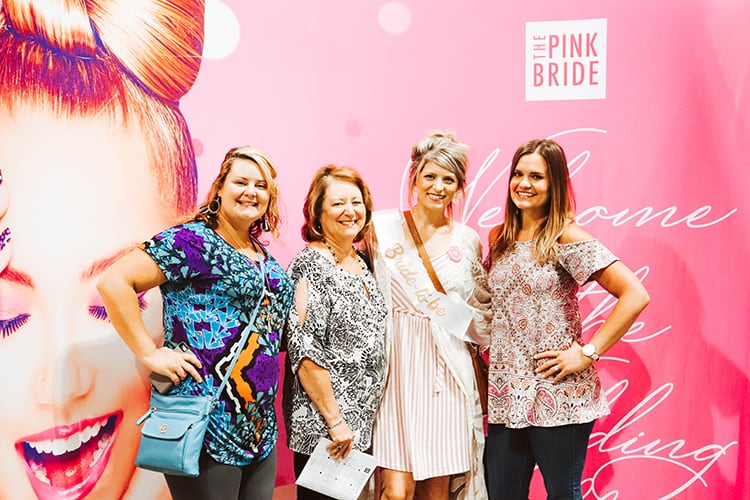Congratulations! If you’re reading this you’ve probably just gotten engaged and are looking to plan your wedding, so let us be one of the first to say we are so incredibly happy for you and your spouse and we can’t wait to begin this journey with you as you prepare for your big day. If you’re like many other brides, you are probably a mixture of excited and slightly confused on exactly what to do next and what steps come on the path to the altar. Wedding prep is oftentimes one of the most fun and stressful times in someone’s life, and as a small group of hard-working females and wives, we know how hard it is to fit daily life in with planning for your future one.
With the love and romance of your dream wedding comes the hundreds of details to consider when planning your swoon-worthy celebration. Figuring out how to incorporate significant moments from your relationship together and values you hold along with figuring out simple things like the vows and processional are often as complicated as they are important. Whether you’re starting from square one or following traditional elements of your faith, your big day can be as big or small as you imagine it. That’s why, in order to make these next few weeks, months, or year leading up to your special day run smoother, we’ve put together your all-in-one go-to place for everything ceremony related.
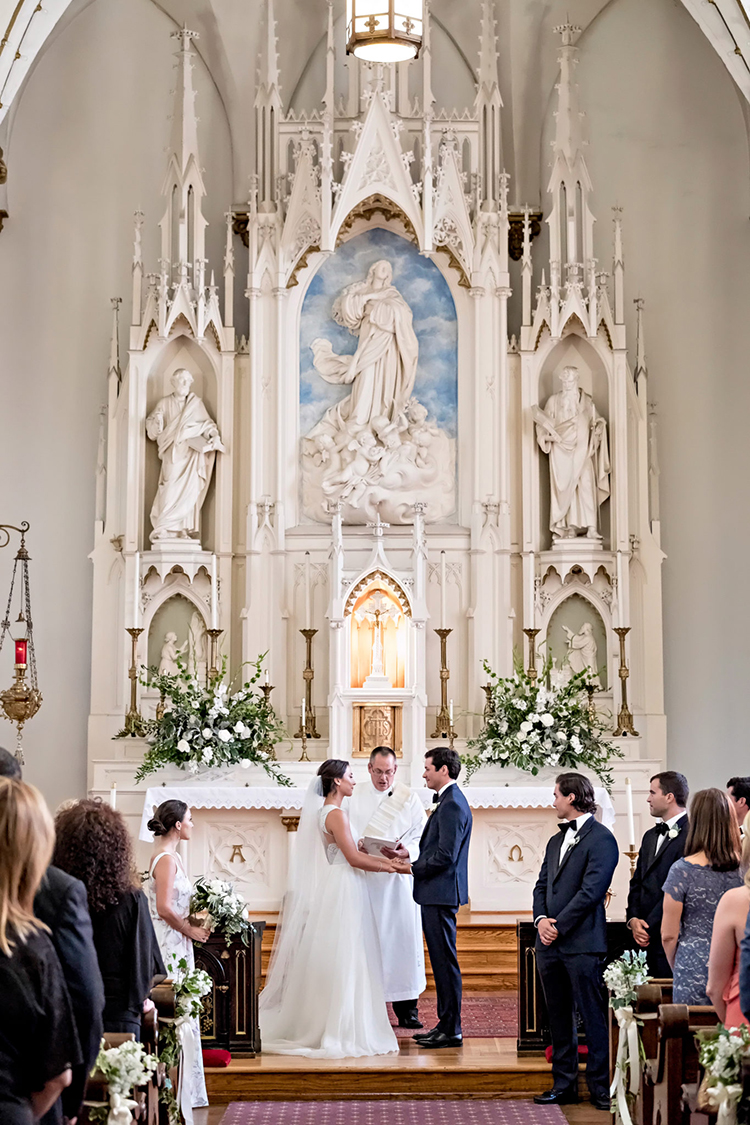
Although traditions vary according to culture, ethnic group, religion and country, wedding ceremonies are the special part of the wedding day when both husband and wife become united in marriage. Ceremonies are slightly different for everyone as each couple has his/her own traditions and personal expectations, but are relatively similar when it comes to basic structure. We’ve listed the elements in a Christian ceremony to give you and your spouse a feel for how the day will go, while you can add, change and customize any elements of your own.
Prelude
The wedding prelude often happens 15 to 30 minutes before the wedding ceremony begins and includes the entrance of guests. Music is normally played to encourage everyone to gather at the altar and find their seats.
Processional
The processional marks the beginning of the formal entrance of the family and bridal party.
Entrance order includes:
- FAMILY: Traditionally, the mother of the bride enters first and is often escorted by a special man in her life, including her father, brother, son or other family member or friend before taking her seat to the left of the aisle in the first row. After this, the groom’s mother will enter the ceremony and sit to the right of the aisle in the first row. She can be escorted by her husband or another male acquaintance.
- MEN: The groom, best man, and groomsmen often walk down the aisle together. If this is not the case, the groom will lead the group to the altar, followed by the best man and then the groomsmen.
- WOMEN: Bridesmaids will walk one by one down the aisle during their processional. The maid of honor will be last so she can stand next to the bride once she arrives.
- CHILDREN: Any flower girls, ring bearers, or any other children will make their way down the aisle just before the bride.
- BRIDE: The bride is traditionally accompanied by her father as she walks down the aisle. The father will walk on the bride’s right side and will lift the veil at the end of the aisle. Some brides choose to make their procession their own and walk with both parents, just their mother, a sibling, or on their own, even switching partners halfway down the aisle to include multiple members of the family.
Welcome/Introduction
The welcome serves as an introduction to the purpose of the gathering and brings attention to the beginning of the ceremony. The officiant will often thank guests for attending.
Declaration of Intention
The Declaration of Intention is the time when the officiant questions the bride and groom at the altar, otherwise known as the “I Do’s”. The words spoken during this time declare the couple’s intention to marry.
Example:
Officiant (To The Bride and Groom Individually) :
________,will you take this woman, whose hands you hold, choosing her alone to be your wedded wife? Will you live in the state of true matrimony? Will you love her, comfort her, through good times and bad, in sickness and in health, honor her at all times, and be faithful to her?
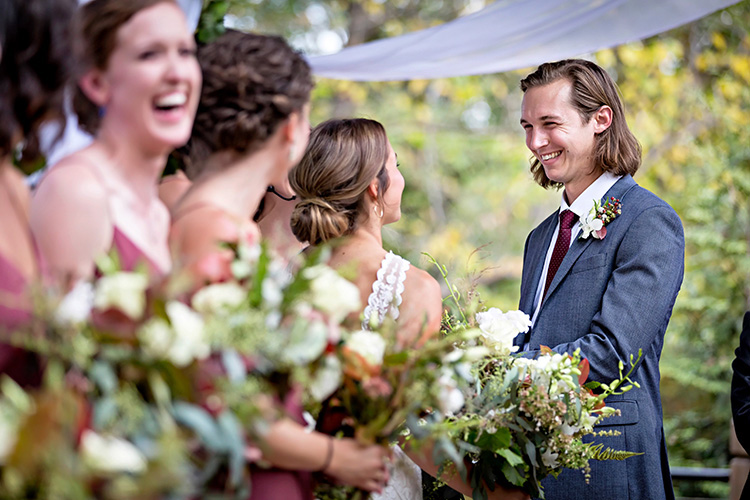
Prayer
The officiant often offers a prayer at this time and discusses what role religion has played in the lives of the couple.
Marriage Address
Officiants may want to include a personal anecdote about the couple in their own words. The bride and groom may also want to take time to talk about their love story to the guests, including scriptures that are important to the couple, poems or book excerpts. Some couples choose to read from letters, songs or quotes they enjoy. If the couple chooses to let others speak, they may want to talk with them beforehand to make sure the selected person or volunteer is comfortable with public speaking. Make sure to remind anyone who is speaking of the parameters such as being respectful or to exclude certain things from their speech.
Vows
Because they set the stage for marriage, your vows are the chance to tell the world why you love your partner and the values you hope to bring to your marriage. The vows are the moment when the husband and wife exchange verbal promises to each other regarding the intention of their marriage. These words are often personal and are either prepared before the ceremony and read on paper or are memorized. Before this moment in the ceremony, and hopefully before the wedding day itself, make sure you and your spouse are on the same page regarding their personal speaking preferences. Some people may or may not be comfortable with sharing personal vows to a public audience, so it is important to decide which direction you want your vows to go.
Vow Tips:
Personal – If you’re planning on writing your own personal vows, take time to get inspired and get creative. Give yourself enough time to plan what you want to say on your computer or on a pad of paper. Take inspiration from interactions between the two of you, their own personal belongings that make a characterization of their personality, or watch movies, read books or listen to music that will get your brain turning. As you write, make multiple drafts and edits as necessary before the big day.
Traditional – Some couples prefer to use traditional vows that have been used throughout generations of their family. Before the wedding day, be sure to check in with the officiant on what vows you will be reciting and they can let you know if there are any rules or regulations if you plan on using religious vows. Don’t forget to ask your officiant for a copy of the vows and review them with your partner, making any edits to customize them to your liking.
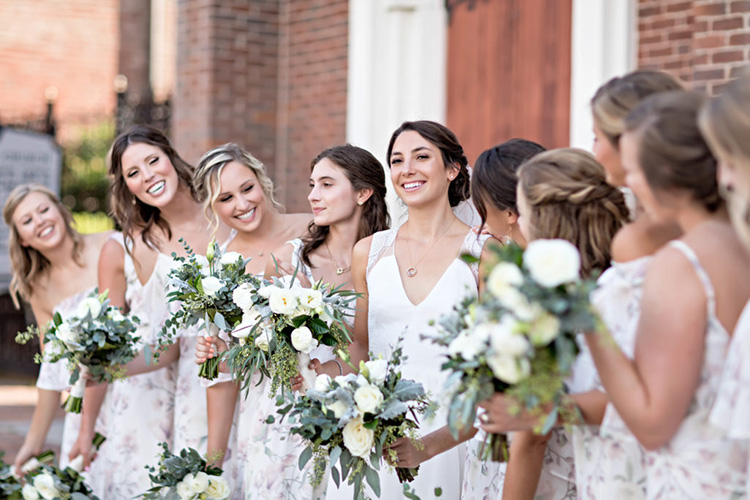
Exchange of Rings and Blessing
The ring exchange allows the couple to be reminded of their vows when wearing them as a symbol of their love.
Pronouncement of Marriage
After the exchange of rings, the officiant will bless and recognize the marriage, pronouncing them husband and wife. This normally leads to a kiss shared between the couple.
Communion
Some couples choose to have their first action as husband and wife be taking communion to represent their religion. This includes breaking bread between the two of them and may include their bridal party and congregation.
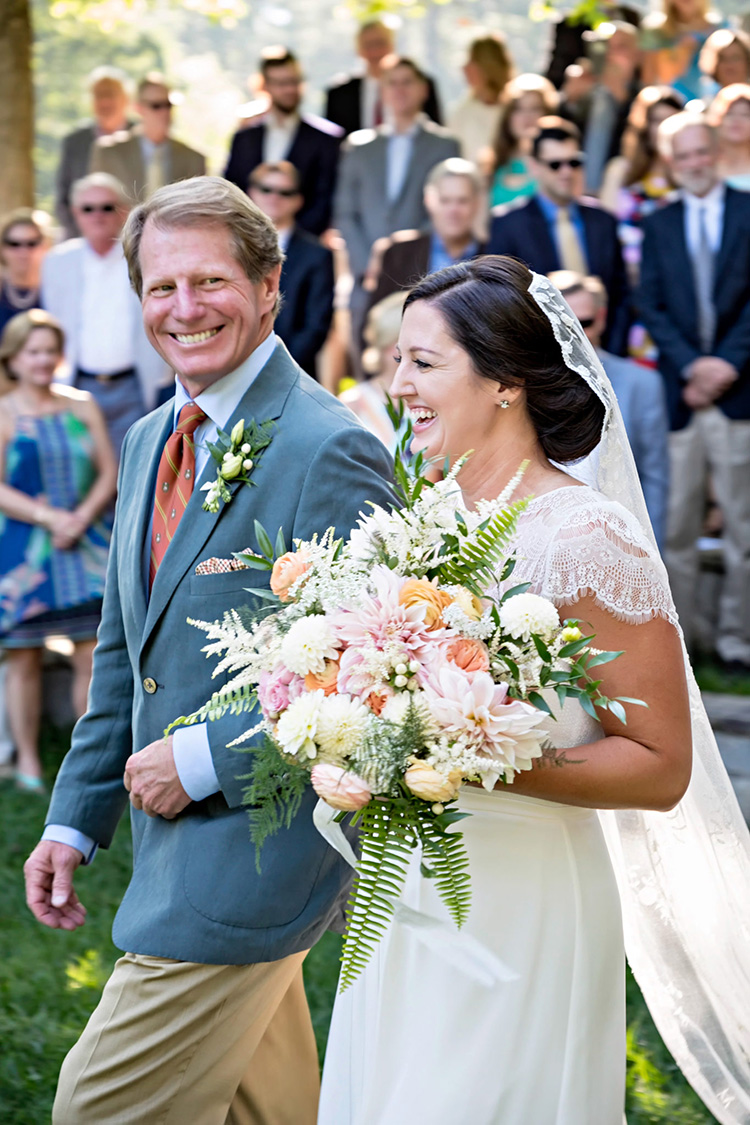
Closing Blessing
The officiant will offer one final blessing for the newly married couple, and will offer positive hopes and wishes for their future together.
Recession
Once the bride and groom have been presented to the guests, the couple will leave the altar, beginning the celebration. Traditionally, the wedding party exits in the opposite order upon completion of the ceremony.
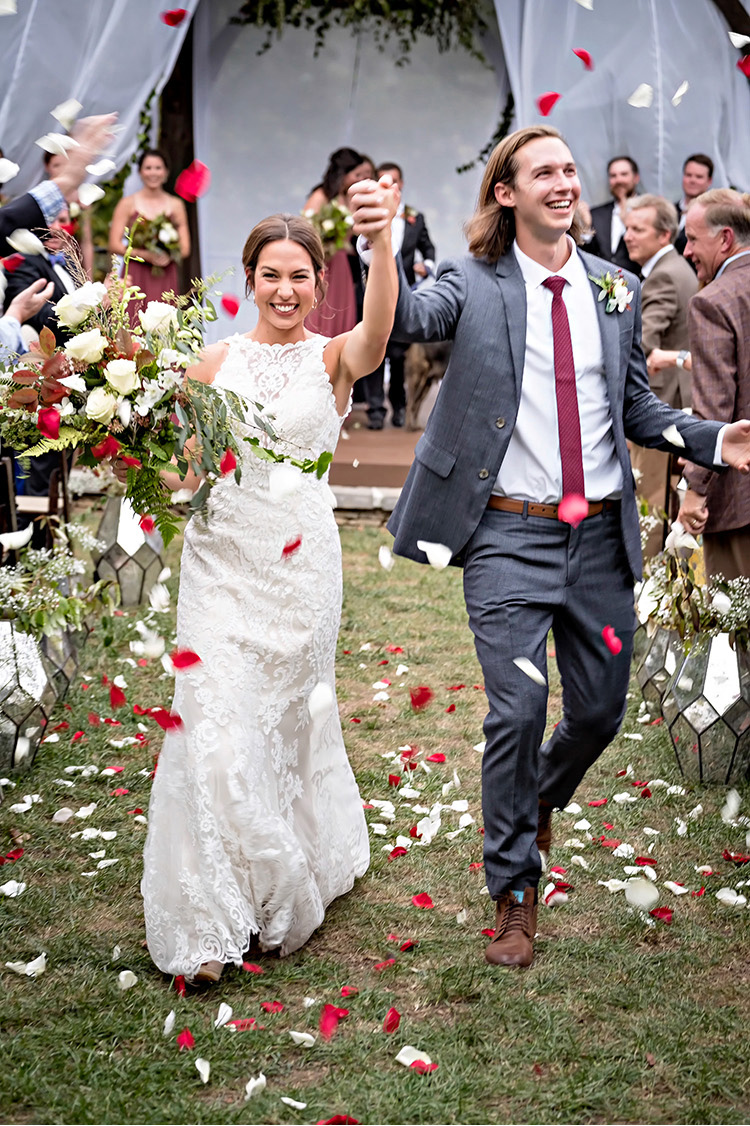
If you have any other ceremony-related questions, please feel free to let us know in the comment section below!
All photos by Waldorf Photographic Art.




